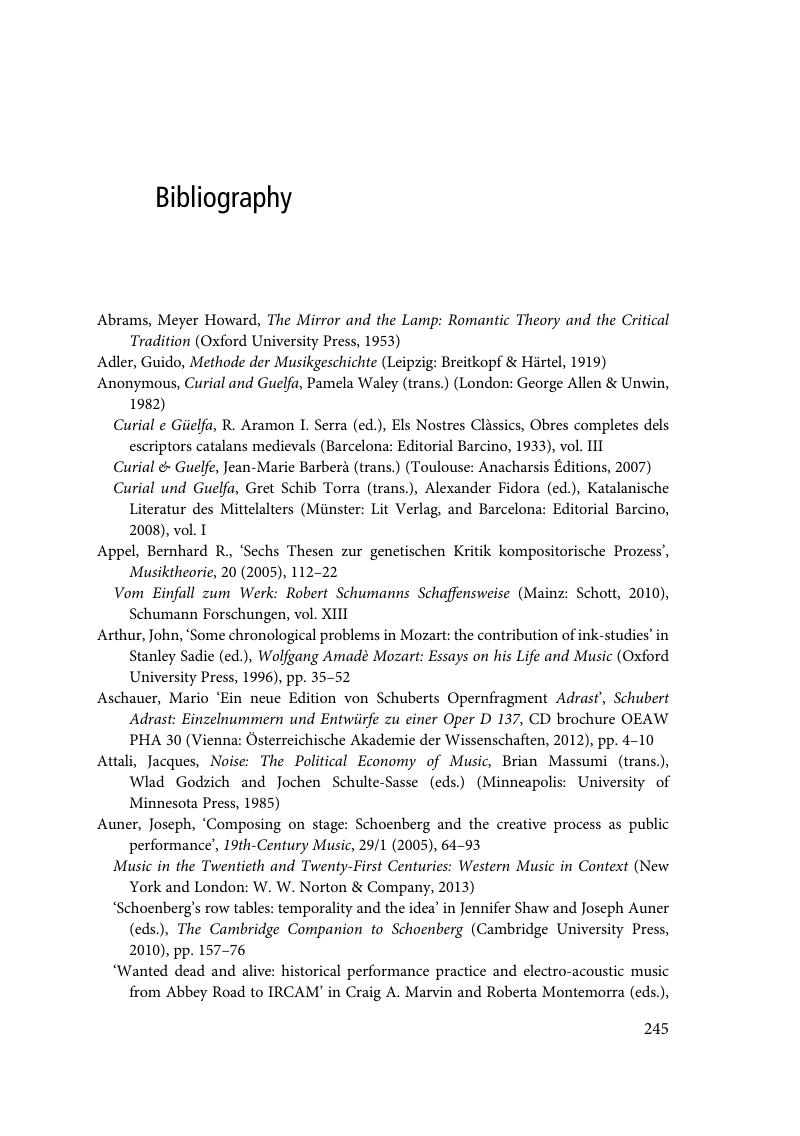Book contents
- Frontmatter
- dedication
- Contents
- List of figures
- List of music examples
- List of tables
- Preface
- Chapter 1 Introduction
- Chapter 2 Sketch studies past and present
- Chapter 3 Tracking down evidence of the creative process
- Chapter 4 The physical objects of the compositional process
- Chapter 5 Studying loose leaves
- Chapter 6 Sketchbooks
- Chapter 7 Transcription and facsimile reproduction
- Chapter 8 Sketches and the critical edition of music
- Chapter 9 Dangerous liaisons: the evolving relationship between sketch studies and analysis
- Chapter 10 Musical palimpsests and authorship
- Appendix: Beethoven sketchbooks published between 1913 and 2013
- Notes
- Glossary
- Bibliography
- Index
- References
Bibliography
Published online by Cambridge University Press: 05 February 2015
- Frontmatter
- dedication
- Contents
- List of figures
- List of music examples
- List of tables
- Preface
- Chapter 1 Introduction
- Chapter 2 Sketch studies past and present
- Chapter 3 Tracking down evidence of the creative process
- Chapter 4 The physical objects of the compositional process
- Chapter 5 Studying loose leaves
- Chapter 6 Sketchbooks
- Chapter 7 Transcription and facsimile reproduction
- Chapter 8 Sketches and the critical edition of music
- Chapter 9 Dangerous liaisons: the evolving relationship between sketch studies and analysis
- Chapter 10 Musical palimpsests and authorship
- Appendix: Beethoven sketchbooks published between 1913 and 2013
- Notes
- Glossary
- Bibliography
- Index
- References
Summary

- Type
- Chapter
- Information
- Music Sketches , pp. 245 - 265Publisher: Cambridge University PressPrint publication year: 2015

